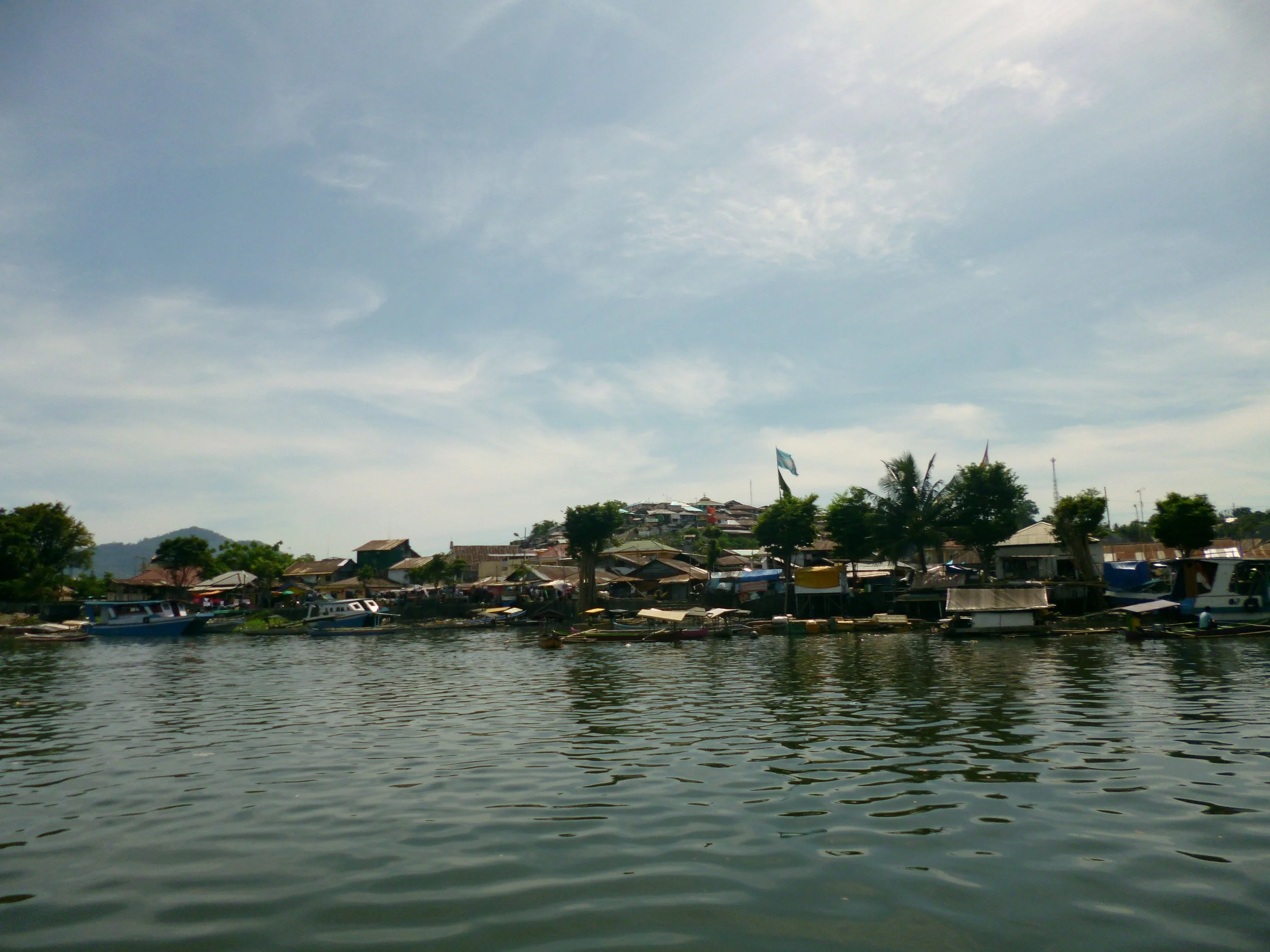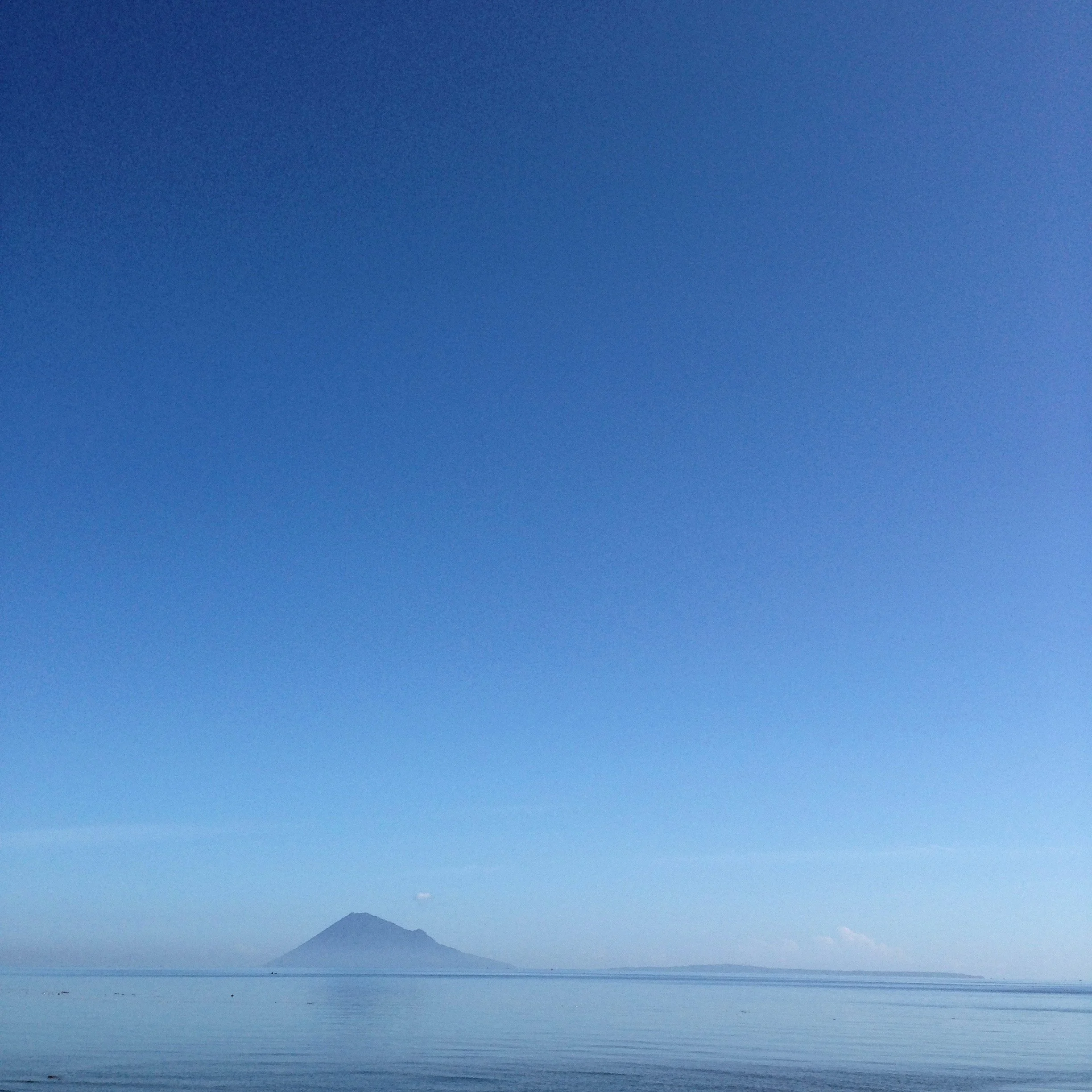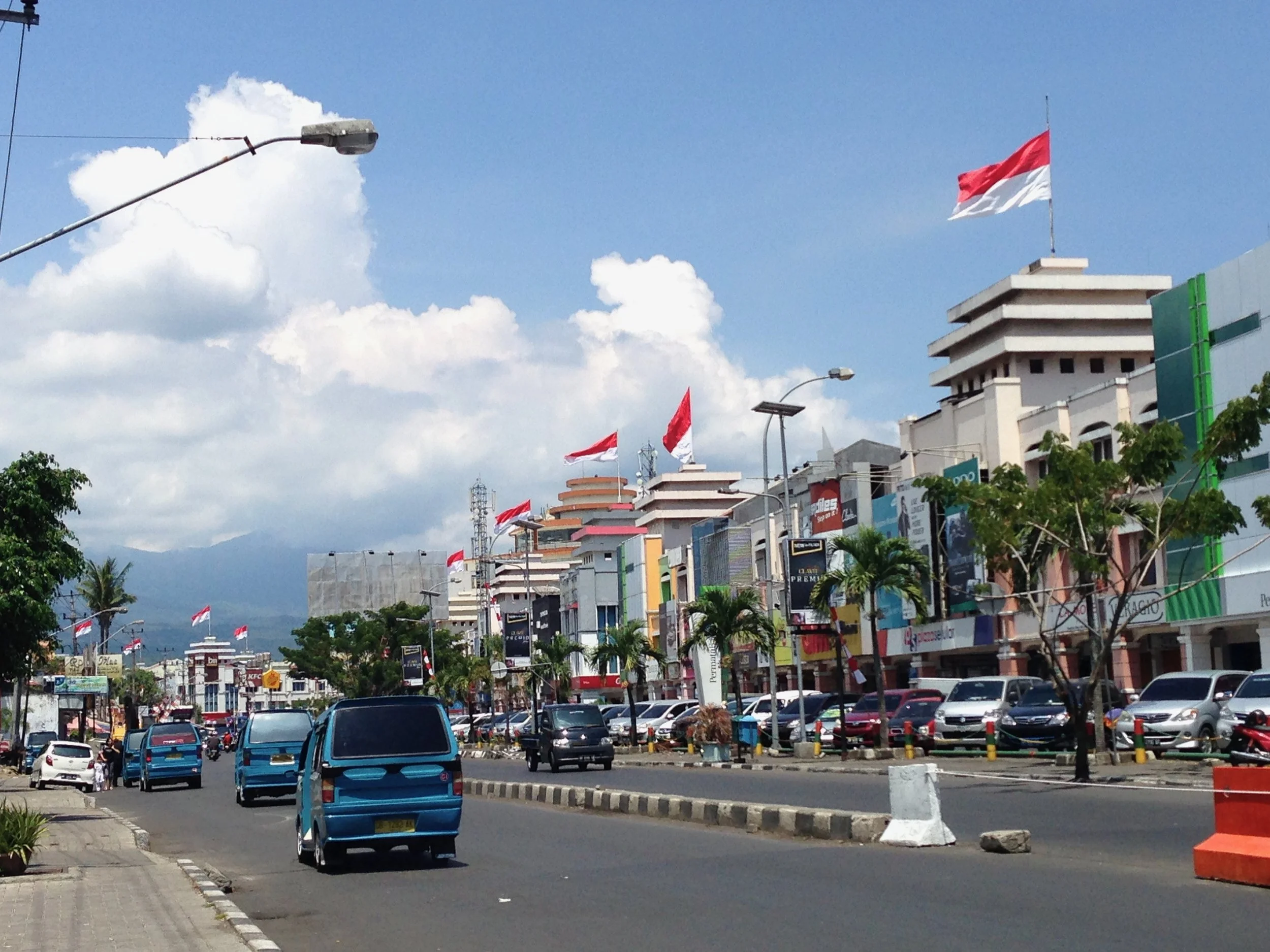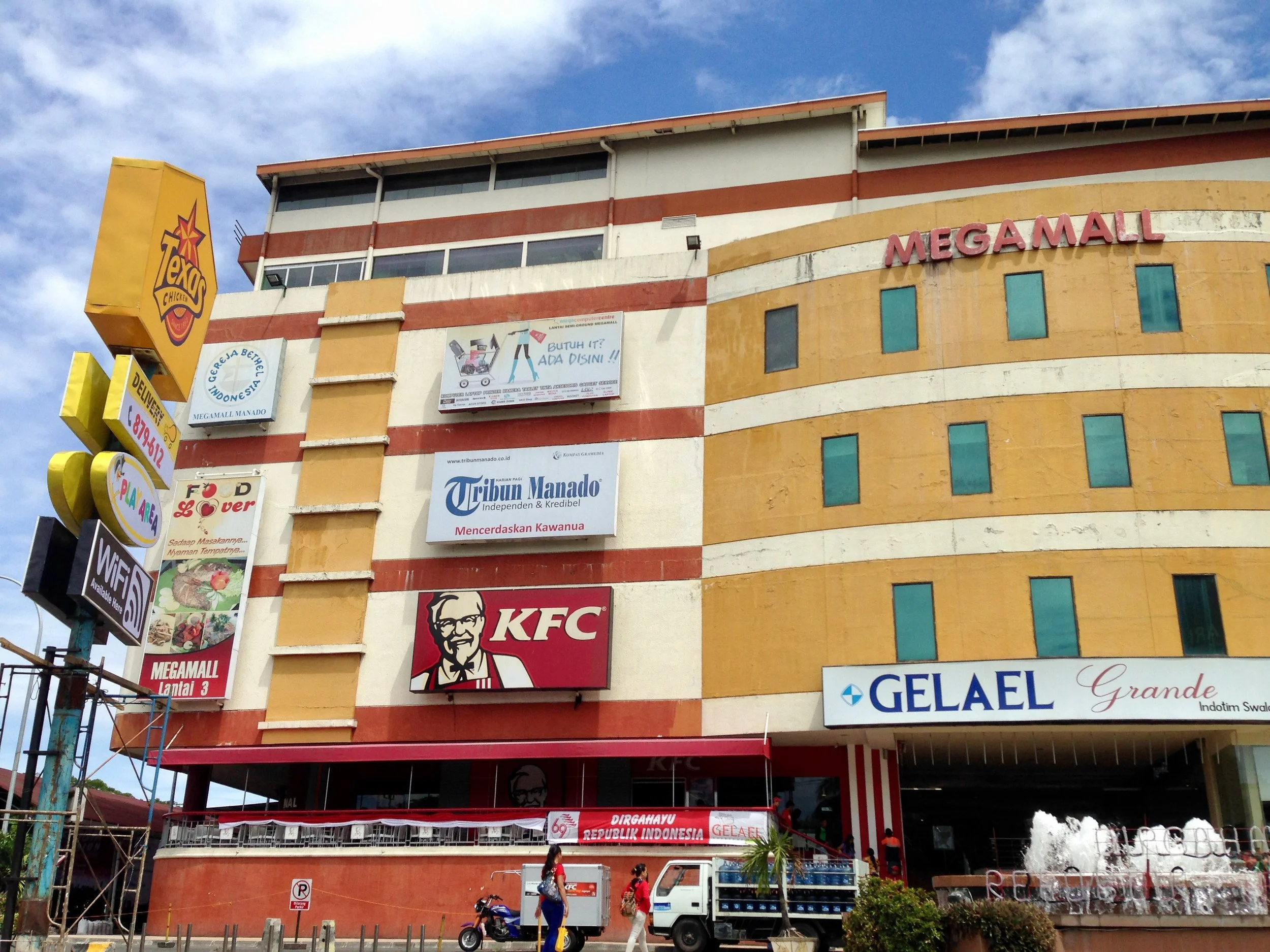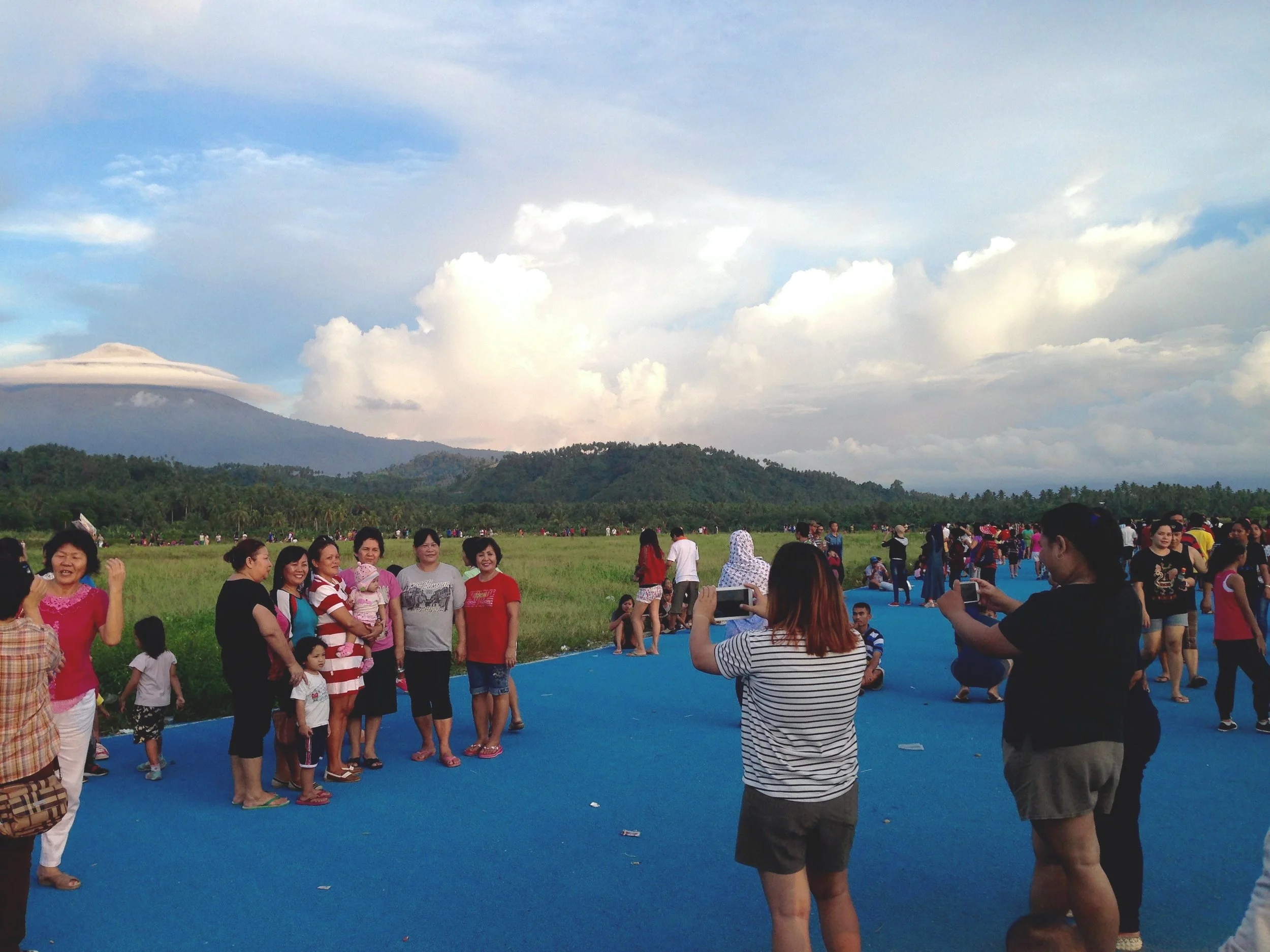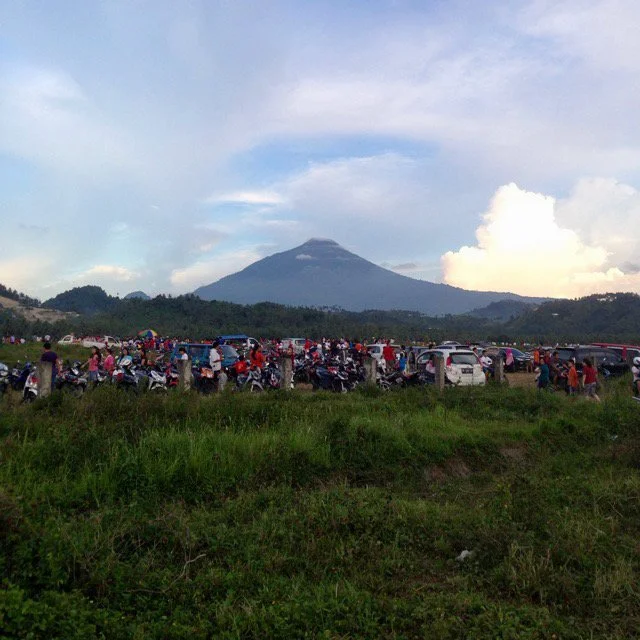Prologue | Modern Manado
There was a dead dog floating in the river behind the woman I was talking to. Life bustled all around it: thin, brightly colored wooden boats carrying commuters crisscrossed to and fro between the northern and southern banks of the Jengki River (Kuala Jengki). Across from us, on the northern bank, was a neighborhood known as Calaca (pronounced chá-la-chá), part of a wider area around the riverbank known by the same name. Clusters of shacks and houses packed tightly together were scattered across a small hill overlooking the bay, at the center of which was the iconic volcanic island Manado Tua. Life on the hill appeared far less picturesque and tranquil than its surroundings.
During my PhD fieldwork in Manado, North Sulawesi, Indonesia (2014–2016), I frequently encountered appreciation for visions of a modern Manado and the new in general. Many Manadonese proudly described their Christian-majority population as more tolerant, open, and free than other Indonesians, and they presented the Minahasans, a polyethnic Christian group in North Sulawesi that dominated the sociopolitical landscape, as especially “modern, Westernized, and Christian” (Kalangie 2020, 356). It didn’t take long for a newcomer in Manado to hear the city and its people described as “modern” or “Western,” often in comparison to places like Bali and in contrast to most other cities in Indonesia. This attitude toward modernity was also visible in the ever-growing number of urban development projects spreading across the city at the time, including the recently completed construction of a large and already famous new bridge, Jembatan Soekarno.

There were pockets of seemingly untouched natural beauty scattered amid the more unpleasant byproducts of a rapidly growing urban landscape. And at the heart of the city and visible from almost anywhere within it was Manado's stunning bay, which was itself in transition.
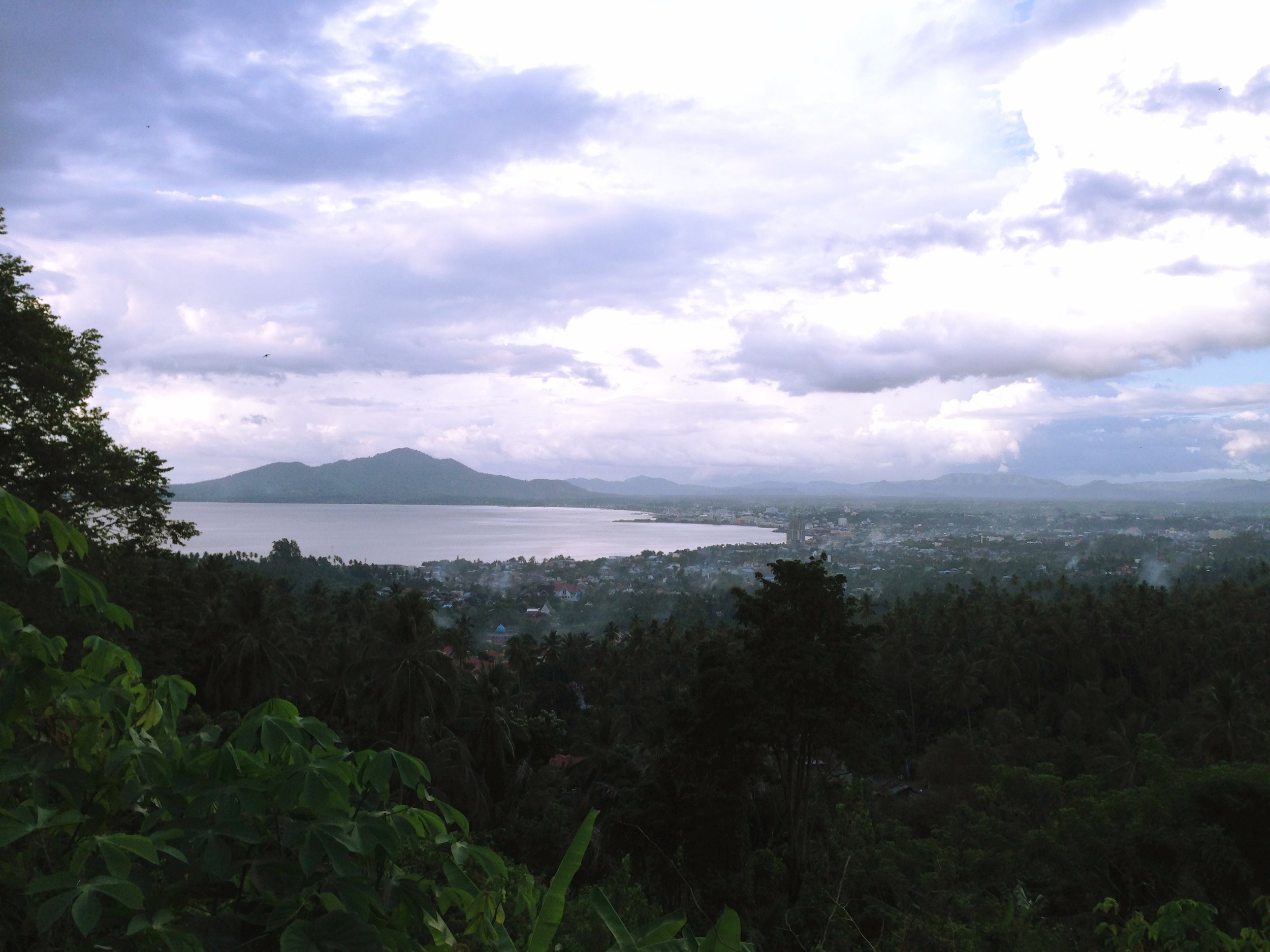
As the new landmark in Manado, Soekarno Bridge became the destination for visitors from all over the city and the surrounding areas. Parked cars and motorbikes lined both sides of the bridge as passengers flocked to its railings and even the center lane of traffic to take selfies.
I had observed a similar trend just a few months earlier, when a new running track—known as karpet biru (“blue carpet”) due to the blue rubber material it was made from—had opened on the outskirts of the city. It seemed that everybody in the city and its nearby villages was suddenly gathering at this brand-new attraction.
Soekarno Bridge thus became a popular destination for locals, including the local police. Both the bridge and its connecting streets became part of their daily patrols, and hanging out on those streets and sidewalks at nighttime was no longer accepted as a normal part of life in Manado. Just like Cap Tikus, the alcoholic drink that I focus on in my thesis, the area was becoming a site that provoked anxiety and moral panic (Lee 2016), with particular concern about the combination of youth and alcohol.
The text on this page is extracted from the PhD thesis: “Inside the Drinking Circle: Cap Tikus, Contested Modernities, and Youth Resistance in Manado, North Sulawesi.” This thesis was submitted by Nastasja Ilonka Roels as part of the Doctoral Regulations of the University of Amsterdam (UvA). All text references should be made to the original thesis manuscript, once published via the UvA Digital Academic Repository, and not to this website. Permission is required to copy, display or reuse images, songs, and videos.
